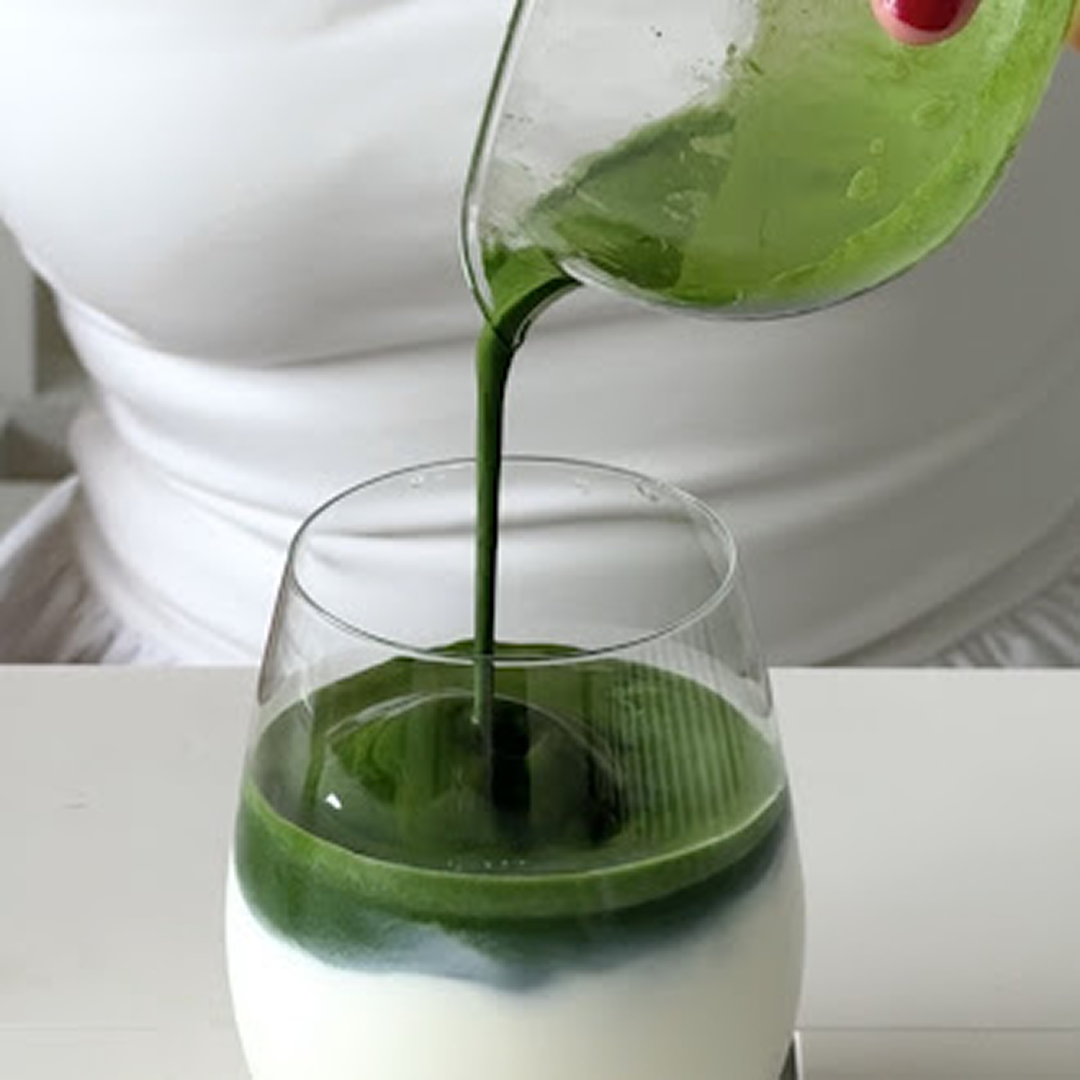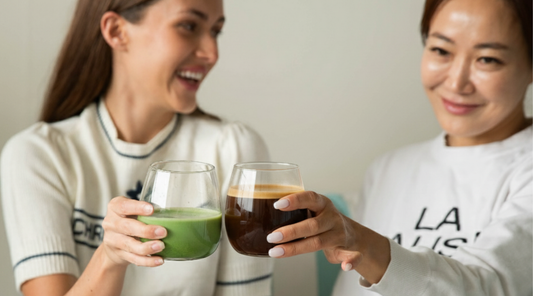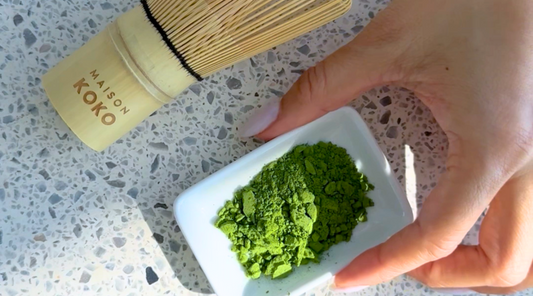
The Art of Matcha Shading: How Light Shapes Flavour
Share
When you sip a bowl of matcha, you’re tasting more than powdered green tea, you’re drinking centuries of craftsmanship, agricultural science, and cultural ritual. One of the most defining elements of this journey is shading, a cultivation technique that changes how the tea plant (Camellia sinensis) grows in its final weeks before harvest.
In Japan, shading (oishita 覆下) is not simply a farming method. It’s a practice deeply tied to the pursuit of umami 旨味, balance, and harmony in the tea bowl. From the famed Uji 宇治 region to Yame 八女, shading has become the invisible brushstroke that shapes colour, taste, aroma, and even the meditative energy matcha is known for.
A Brief History of Matcha Shading
The roots of matcha shading trace back to the 16th century, during the flourishing of chanoyu 茶の湯 (Japanese tea ceremony). Early tea masters like Sen no Rikyū emphasised not just how tea was served, but how it was grown. Farmers in Uji began experimenting with bamboo mats and straw coverings to reduce direct sunlight, noticing that shaded leaves produced sweeter, smoother teas.
This innovation gave birth to tencha 碾茶, the shaded leaves that are steamed, dried, and later stone-ground into matcha. Over time, shading evolved into specialised methods—Honzu, Tana, and Jikagise, that remain the foundation of ceremonial and culinary matcha today.
Why Shading Matters
Matcha starts out like any other green tea: tender tea leaves. What makes it unique is that farmers cover the plants for three to four weeks before harvest. Reducing sunlight slows photosynthesis, which pushes the plant to produce more chlorophyll and amino acids like L-theanine.
That’s why shaded tea is:
- Greener in colour, with a rich emerald hue
- Sweeter and smoother, thanks to higher L-theanine
- Naturally energising but calm, balancing caffeine with amino acids
This is what separates premium matcha from everyday teas.
The Three Main Matcha Shading Techniques
Honzu – Handcrafted Tradition
Honzu is the oldest and most labour-intensive shading method. Farmers build bamboo frames and cover them with straw or reeds, creating a natural filter for sunlight.
- Used for high-grade ceremonial matcha
- Rich, smooth flavour layered with umami
- Ideal if you want to experience matcha in its most traditional form
Tana – Balanced and Precise
Tana shading is a more modern approach. Farmers use structures covered with black mesh cloth to precisely control light exposure.
- Balanced flavour, smoother than unshaded tea, lighter than Honzu
- Works beautifully for both traditional bowls and matcha lattes
- Elegant yet approachable, making it a versatile choice
Jikagise – Simple and Approachable
The easiest shading method, Jikagise involves laying cloth directly over the plants without building a frame.
- Often used for everyday drinking or culinary-grade matcha
- Flavour is lighter, less complex
- Great for smoothies, desserts, or casual lattes

How Shading Affects Nutrition
Shading doesn’t just affect flavour. It changes the look and the way matcha makes you feel. Because shaded leaves produce more chlorophyll, the powder takes on that signature emerald green colour.
The extra amino acids also give matcha its calming yet energising effect. Unlike coffee, which can sometimes feel jittery, matcha delivers a smoother kind of energy. That’s thanks to the mix of caffeine and L-theanine. A Honzu matcha might feel more meditative and grounding, while Jikagise can give you a light, everyday boost.
Choosing the Best Matcha for Your Lifestyle
- Love slow, mindful tea sessions and deep umami? → Honzu
- Want a versatile option for both bowls and lattes? → Tana
- New to matcha or prefer smoothies and desserts? → Jikagise
Each shading method offers a unique experience. There’s no single “best” matcha—just the one that fits your taste and daily routine.
Shading Meets Terroir
Shading is only part of the story. Regional terroir (climate, soil, and water) creates subtle distinctions:
- Uji 宇治 (Kyoto) → Famous for refined sweetness and elegance.
- Yame 八女 (Fukuoka) → Known for bold umami and depth.
Curious how these regions compare? Read our in-depth guide: "Yame vs Uji: Which Is Better?"
Glossary of Key Terms
- Chanoyu (茶の湯) → Japanese tea ceremony, focusing on the ritual and art of preparing matcha.
- Umami (旨味) → The “fifth taste,” a savoury richness enhanced by shading.
- Tencha (碾茶) → Shaded tea leaves that are ground into matcha.
- Oishita (覆下) → The act of shading tea plants.
- Honzu (本簀) → Traditional shading method using bamboo and straw.
- Tana (棚) → Shading with modern mesh coverings for consistency.
- Jikagise (直被覆) → Simplified shading with cloth directly over plants.
- Kanreisha (寒冷紗) → The synthetic black mesh used in Tana shading.
- Terroir → The natural environment (soil, climate, topography) that influences flavour in teas and wines.
Final Thoughts
The powder in your bowl is not just tea. It’s a story of light, leaf, and legacy. Shading elevates matcha into something extraordinary: deeply green, rich in umami, and balanced in energy.
Whether you choose the handcrafted Honzu, the precise Tana, or the approachable Jikagise, every sip connects you to centuries of Japanese tea mastery.
FAQs
Does more shading always mean better matcha?
Not always. Honzu produces the richest flavour, but lighter techniques like Tana and Jikagise create approachable teas that work well in modern drinks and recipes.
Which shading is best for beginners?
Jikagise is affordable and approachable, making it a good starting point. If you’re curious about the best matcha for lattes, Tana shading is your match.
How do I know if my matcha is shaded?
All authentic Japanese matcha is shaded. The method depends on the grade: ceremonial matcha usually comes from Honzu or Tana, while culinary matcha is often Jikagise.








